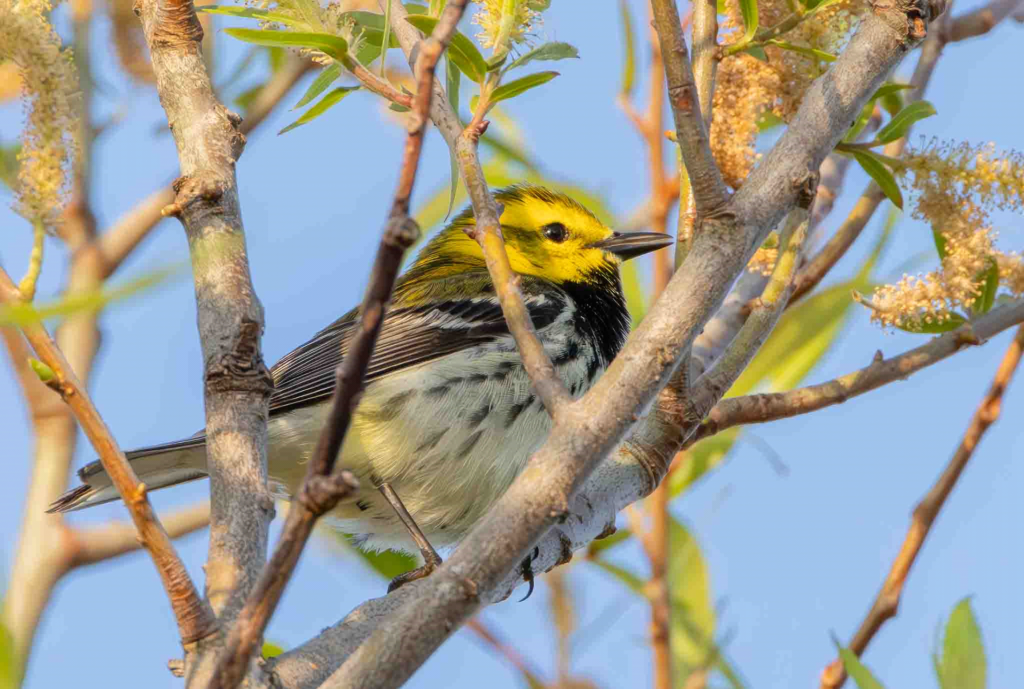Warbler Spring Migration
Article By Susan Reel-Panish

Black throated green warbler – Photo credit Dennis DiMarco
In a June 2018 article, on the National Audubon Society website, author Andrew Del-Colle describes a phenomenon sometimes known as a “Fall Out.” In this case, observers in Quebec, Canada saw hundreds of thousands of Warblers, and some other birds, migrating all at once, over the course of several hours. It seems that the birds were making course corrections in the morning after veering slightly off-course during the previous night.
While we may not experience an event of this magnitude in our area, May is the time when these beautiful little Warblers return to our area. According to Brian Johnson, New Jersey Natural Lands Trust preserve manager, 16 warbler species breed in southern New Jersey. They are seen here starting in May and into the summer. In addition, there may be another 35 species that migrate through our area in the late spring.
The Warblers are returning here after spending the winter in warmer climates – mostly in Central America, South America or south Florida. In the article in Natural Lands newsletter, February 2023 issue, there are photos of three Warbler varieties most common to our area. These three are the Prothonotary Warbler, the Black and White Warbler, and the Prairie Warbler. Most warblers are yellow. But, they may also have areas of red, green, blue, orange and even black, white or gray. The article mentions the main diet of Warblers consists of insects and spiders, and that some Warblers also eat nuts, berries and seeds.
Quoting from Johnson’s article, “Most warbler species prefer to spend their time high in the trees (the better to catch flying bugs), so experienced birders will often rely on warblers’ songs to help them identify the birds. There is a reason that the aches that birders sometimes experience from staring up for extended periods of time is called “Warbler Neck”—the warblers are so pretty that birders can’t help themselves!”
Johnson notes that some Warblers nest in tree hollows. Others build nests on the ground. While still others like to build nests in shrubs or short trees. The newsletter article points out that while these three types of Warblers are not endangered currently, some of their populations are growing smaller, and there is concern that they could decline.
According to Johnson, the main threats to Warblers are loss of habitat from overbuilding in natural areas; use of pesticides – particularly those targeting mosquitoes; and Cowbirds that lay their eggs in a Warbler’s nest – sometimes removing the Warbler’s own eggs, or out-competing the young Warblers for food. Deforestation has made the Cowbird problem worse. But, there is hope: a law passed in 2002, the Neotropical Migratory Bird Conservation Act (NMBCA) is helping with conservation of habitat.
